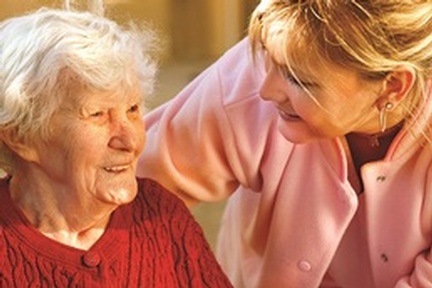Respite care can offer way forward in social care stalemate
The pressures on health and social care mean we need to use innovation and flexibility to deliver better services to patients. At the moment, too many people are being admitted to the busy and stressful environment of an acute hospital ward through a lack of any suitable alternative.
 Respite care can often help an individual recover more than a stay in hospital, whether it’s a short term stay in a care home or supported accommodation, or a package of homecare for 12 weeks. Respite care can be used to support individuals through a short term illness such as a chest infection or provide a much needed break for carers. It can be a pre-emptive measure too, preventing someone from going into hospital in the first place.
Respite care can often help an individual recover more than a stay in hospital, whether it’s a short term stay in a care home or supported accommodation, or a package of homecare for 12 weeks. Respite care can be used to support individuals through a short term illness such as a chest infection or provide a much needed break for carers. It can be a pre-emptive measure too, preventing someone from going into hospital in the first place.
Above all, if the right level of care is given at the right time it ensures each person has the best chance of staying well and remaining more independent. And respite care offered outside of hospitals can provide a more peaceful, comfortable experience that gives patients more freedoms. The National Intermediate Care Audit 2015 showed that 77 per cent of those admitted to bed-based intermediate care, such as a care home with nursing met their rehabilitation goals.
Leonard Cheshire Disability is looking to provide more of this type of care. Working with health services, we can offer a respite place more cost effectively than an acute hospital and offer the characteristics for which Leonard Cheshire is known: customer focus and empowerment. This enables the health sector to concentrate on what they are best at – acute care. The key is to be flexible, identifying when someone needs a ‘step up’ to more support, or a ‘step down’ to more independence as part of a re-ablement service. As a whole care system we need to support this with better integration and more communication, and yet the National Intermediate Care Audit demonstrated that there is a lack of intermediate care places available.
The sooner these re-ablement services can intervene, the greater a person’s chances of rapid return to independence are. We know from a King's Fund study in 1996 that older people discharged to bed-based ‘step down’ facilities had earlier hospital discharge and felt more positive about their recovery. In 2010, NHS Hertfordshire developed a strategy looking at care home beds for patients nearby which allowed an existing hospital site to be redeveloped and the closure of outdated facilities. Good quality care homes and care-at-home should be seen as the hidden resource in our system.
GPs could also play a greater role through the CCGs to get more people into respite care to prevent the need for hospital stays. This model has been used successfully in care homes in Hartlepool and Stoke-on- Trent to rehabilitate those recovering from fractured hips and chest infections.
If we genuinely want a national strategy with better integration of health and social care we must start making better use of the care homes rated as ‘good’ or ‘outstanding’, as well as fully utilising the outstanding care and skills set of our existing staff in social care.
Latest Opinion News
 27-Sep-19
Comedian reveals complexities of performing for people with dementia
27-Sep-19
Comedian reveals complexities of performing for people with dementia
 23-Jul-19
Care home residents go wild for 30 days making daisy chains and counting bees
23-Jul-19
Care home residents go wild for 30 days making daisy chains and counting bees
 02-Jul-19
National festival to celebrate care workers
02-Jul-19
National festival to celebrate care workers
 24-Jun-19
Exclusive: Care Minister Caroline Dinenage tells care homes 'loneliness is everyone's business'
24-Jun-19
Exclusive: Care Minister Caroline Dinenage tells care homes 'loneliness is everyone's business'
 16-Apr-19
Exclusive: Care Minister Caroline Dinenage on EU care workers' rights after Brexit
16-Apr-19
Exclusive: Care Minister Caroline Dinenage on EU care workers' rights after Brexit